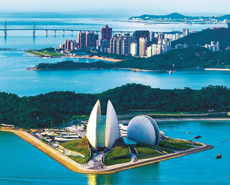
S.G. cast iron demand cautiously optimistic in 2018
----Interview with Fan Heping
Sales and Purchases GM
Weihai Xinshan Group
Sales and Purchases GM
Weihai Xinshan Group
Weihai Xinshan Group is focusing on production of high quality S.G. cast iron and castings. It is one of the appointed producer of S.G. cast iron by the China Ministry of Industrial and Information Technology. At the moment, it is the only producer of S.G. cast iron still active in Shandong.
Asian Metal: Thank you for accepting the interview of Asian Metal. Please first give a brief introduction of your company.
Fan: Weihai Xinshan Group is the only legal producer of S.G. cast iron in East Shandong province. We have two blast furnaces of 128 cubic meters with a capacity of 300,000 tons per year. We mainly produce cast iron series from Z14 to Z26 and S.G. cast iron series Q10 and Q12. Our product is of low content of sulfur, phosphorus and manganese and thus could be widely used for auto parts, machinery for textile, fire protection and petroleum pipes and so on. We also explore into iron ore, logistics and downstream casting industry.

Asian Metal: How was your business going in past 2017?
Fan: We produced only 100,000 tons of S.G. cast iron and cast iron in 2017 as most of the time, we only run one blast furnace. But this month, we start full operation and expect the output to double in 2018.

Asian Metal: What do you think was the most impressive in 2017?
Fan: The environmental protection pressure in 2017 was so intensified but the whole industry benefited with better profits for both S.G. cast iron and cast iron. As many downward capacity was wiped out, iron industry was not in so severe competition that prices had soared, even doubled from the previous years. But meanwhile, downstream casting plants turned to use more foundry scrap to lower costs, which reduced demand of iron as a result.

Asian Metal: In your opinion, what percentage has scrap taken up in current casting production?
Fan: Now some casting plants have totally used scrap to replace iron in low quality castings. Even in the production of high quality castings, some casting plants with mature technology have enlarged the ratio of scrap to 70%. Only those castings requiring high quality iron still use mostly S.G. cast iron to ensure good quality.
















